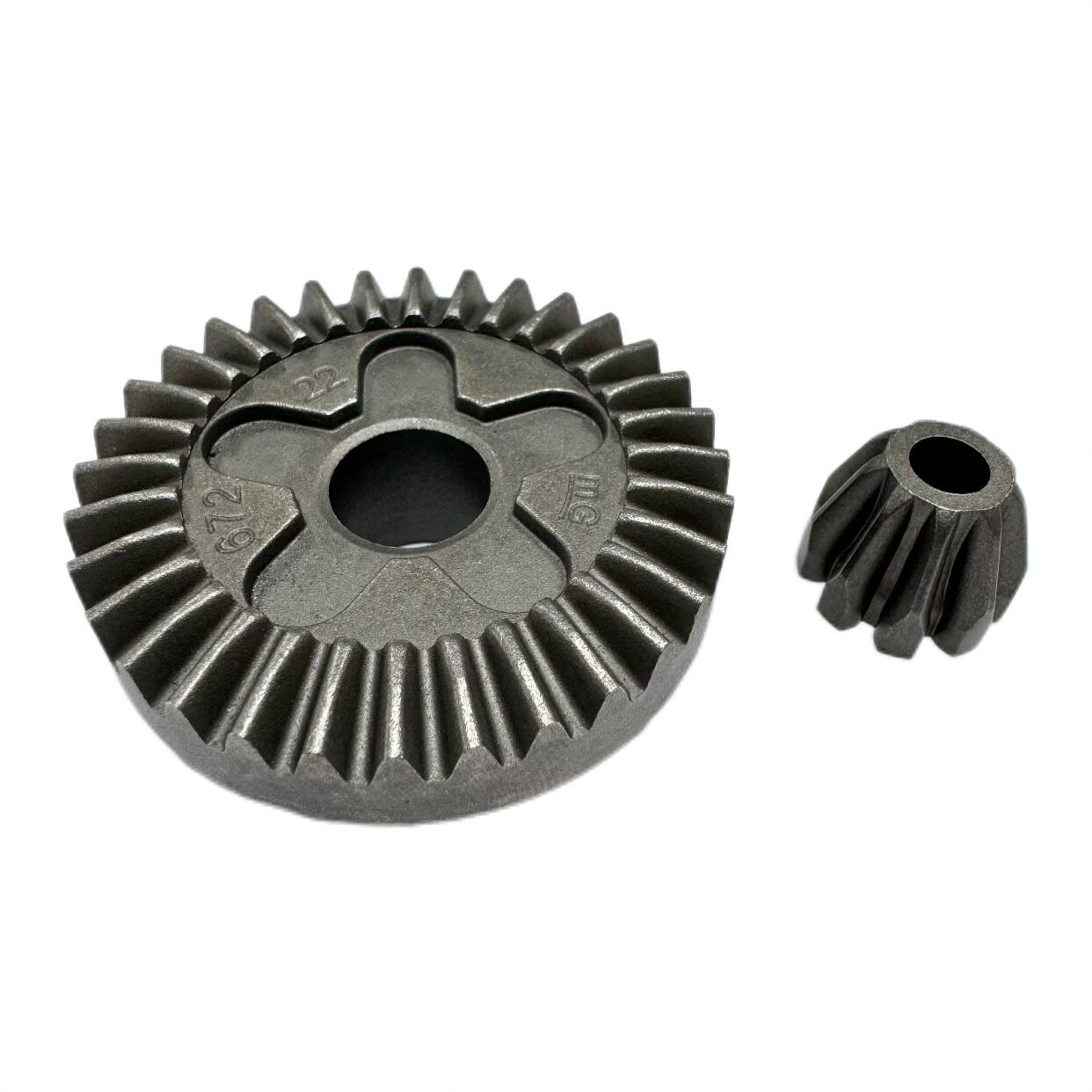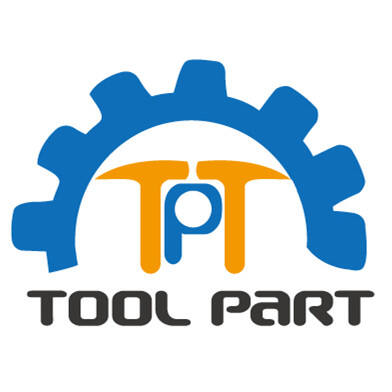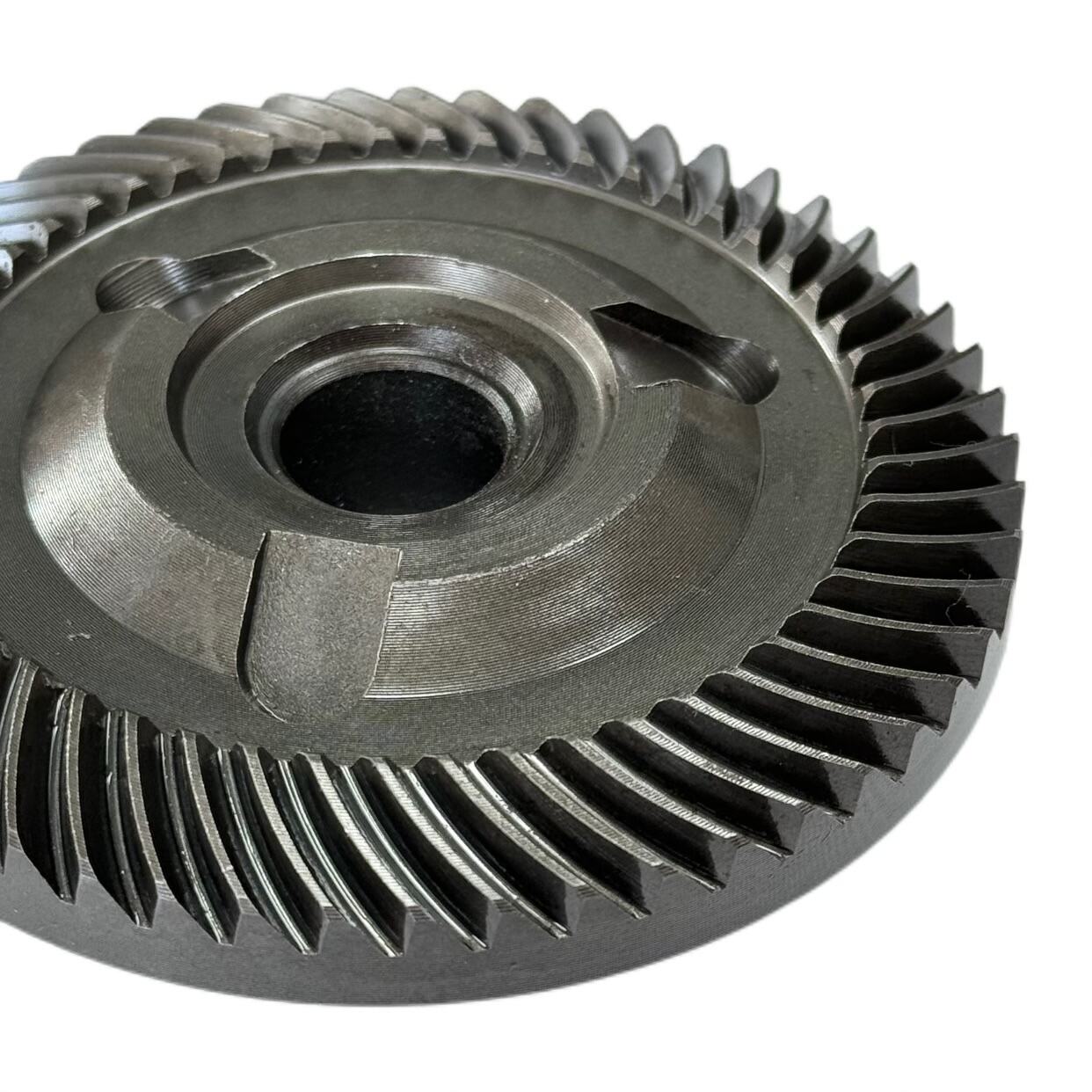Fundamental Role of Wheel Gears in Mechanical Systems Efficiency
Torque Multiplication Through Gear Ratios
Wheel gears play a major role in multiplying torque within mechanical systems, primarily through adjustments to gear ratios. When bigger gears are used, they significantly boost the amount of force generated, which explains why these gears are so essential for situations where substantial power is needed. Getting a handle on how this works lets engineers customize their mechanical setups according to what's required operationally. Take the gear ratio formula for example it basically tells us how much torque will come out of the system, giving valuable information when designing gears, especially important stuff like race cars or heavy machinery. Different kinds of gears like spur, helical, and bevel all produce varying levels of torque, so picking the right type becomes pretty crucial if someone wants maximum performance while keeping things efficient across various applications.
Power Transfer Mechanics in Wheel Gear Configurations
Wheel gears play a key role in transferring power smoothly through mechanical systems, adjusting both speed and torque between different components. When engineers look at how these gears are arranged, they can spot where energy gets lost along the way and make adjustments that boost overall efficiency. For companies working on better gear designs, this kind of analysis becomes essential for getting more power out of their machines. How well power moves through a gear system affects more than just how it performs day to day. It actually determines how long the system will last before needing replacement parts. The automotive industry knows this well, as do manufacturers of heavy machinery. By grasping the basics of how power travels through wheel gears, designers create systems that deliver strong performance while still saving energy, giving them an advantage over competitors who haven't mastered these fundamentals of mechanical engineering.
Mechanical Advantages of Wheel Gear Optimization
Energy Loss Reduction via Contact Ratio Maximization
When we increase the contact ratio in gear systems, it really cuts down on those pesky energy losses from slipping and poor meshing between teeth. The gears just work together smoother, so there's less chance of them sliding past each other instead of turning properly. This matters a lot for things like race cars or industrial machinery where every bit of power counts. Some studies indicate that simply adjusting these ratios can boost efficiency somewhere around 8 to 10 percent. Manufacturers now run computer models to see exactly what happens when they tweak different parameters. These simulations give concrete numbers about how changes affect the whole system. And when companies focus on reducing those energy losses through proper gear design, they're actually making their machines perform better overall.
Friction Minimization Through Load Distribution
Spreading out the load across gear teeth cuts down on friction and wear, so components last longer. Gears that have their workload shared among several teeth don't get stressed as much. This means they don't wear away as fast and keep working for years instead of months. Engineers often use special wear prediction models to figure out how best to reduce friction. These tools work well when we maintain proper alignment and keep loads within safe limits. By following these models, mechanical engineers can apply load distribution strategies that cut energy usage because the gears aren't fighting against unnecessary resistance. Looking at it practically, reducing friction makes gears last longer while keeping mechanical systems running smooth and efficient. This saves money on energy bills and makes whole systems more dependable over time.
Material Science in Wheel Gear Performance
Hardened Tooth Surface Treatments for Wear Resistance
When it comes to wheel gear performance, surface hardening methods like carburizing make all the difference in gear tooth hardness while keeping the core material tough enough for real world stress. These heat treatment processes really boost how long mechanical systems last before needing replacement parts, since they cut down on wear and tear that leads to breakdowns. Research shows surface treated gears typically last much longer than ones without any treatment at all. Some studies indicate treated components might operate twice as long under normal conditions. Most engineers know that picking the right surface treatment matters a lot depending on where the gears will be used. Gears exposed to extreme temperatures or corrosive environments need different treatments than those working in controlled factory settings, so matching the treatment to the application is key for getting maximum service life out of expensive machinery.
Lightweight Alloy Hubs for Rotational Mass Reduction
Using lightweight alloys when designing wheel gear hubs helps cut down on rotational mass, which makes things accelerate faster and run more efficiently. Studies have shown that going with lighter materials actually lowers inertia and means machines don't need as much power to operate, resulting in systems that respond better mechanically. What kind of material gets chosen for those hubs really affects how much weight needs to be managed throughout the whole system. This choice matters a lot for getting optimal performance across different types of mechanical setups. We're seeing this become increasingly important as manufacturers look to make their gear mechanisms work better under all sorts of conditions where quick responses are needed.
Durable Coatings for Long-Term Efficiency Maintenance
Coatings play a vital role in protecting gear surfaces from wear and rust, helping wheels last longer and work better for their intended purpose. Research shows good quality coatings can actually make gears last about half again as long as those without any treatment at all. The protection stays strong enough to keep gears performing well even after years of use. Getting these coatings applied evenly matters a lot too. When done right, proper coating techniques not only strengthen the gears but also help them function properly across their entire surface area. For manufacturers in sectors like automotive or heavy machinery, investing in these protective layers makes sense because reliable operation over time means fewer breakdowns and replacements down the road.

Optimizing Wheel Gear Performance Through Precision Manufacturing
Backlash Control Below 0.05mm Thresholds
Keeping backlash within acceptable limits matters a lot when gears need to mesh properly, since too much play causes annoying noise and unwanted vibrations while things run. Modern manufacturing methods let companies hit those tight tolerances required for good backlash control, something that makes all the difference in building reliable mechanical systems. Engineers frequently turn to computer simulations to see how different amounts of backlash affect overall performance, which helps set realistic goals for what's achievable in real world conditions. The automotive sector especially benefits from this attention to detail, as does aerospace where even small improvements translate into major gains over time. When manufacturers focus seriously on reducing backlash, they end up creating better quality wheel gears that last longer and work smoother in everything from heavy machinery to consumer products.
Microgeometry Optimization for Smooth Meshing
When we tweak the tooth microgeometry on gears, what happens is the contact points between them become much smoother. This means less resistance when they turn together, which makes everything run more efficiently. Studies looking at mechanical systems have found that getting this microgeometry just right can cut down on friction quite a bit while the gears are working, allowing them to mesh without any hiccups. Engineers spend a lot of time making prototypes and running tests on different designs so they can adjust those tooth shapes according to actual performance numbers from real applications. The result? Gears that work better together. And beyond just improving individual gears, this attention to detail actually helps lift the whole system's performance, especially important for machinery where precision matters most.
Surface Finish Enhancements Through Advanced Grinding
Precision grinding makes a big difference when it comes to how smooth gear teeth actually are, cutting down on rough spots and boosting how well they work together. Research shows that getting those surfaces down to around 0.1 microns or better really cuts back on wear and tear over time. When companies build surface finishing right into their manufacturing processes from day one, gears tend to run quieter for longer periods and last much longer overall. The result? Mechanical systems perform better for years instead of months. For shops looking to stay ahead in today's market, investing in these advanced grinding techniques pays off in extended product lifetimes and fewer customer complaints about noisy equipment down the road.
Operational Efficiency Preservation Strategies
Lubrication Systems for Thermal Management
Good lubrication systems really matter when it comes to controlling the heat produced through friction in gears, helping keep those components intact over time. Choosing the right kind of lubricant depends heavily on what kind of conditions the equipment will face, something that makes a big difference in how well things stay cool during operation. Thermal imaging data helps maintenance teams figure out exactly where extra lubrication might be needed based on actual temperature patterns seen during normal running conditions. Taking this kind of forward-looking strategy means gears keep turning without issues while avoiding dangerous heat accumulation points that could lead to breakdowns down the road. Proper lubrication not only saves money on repairs but also means machines last longer before needing replacement parts.
Vibration Damping Through Precision Alignment
Getting things aligned just right makes all the difference when it comes to cutting down on vibrations, keeping gears running smoothly, and extending their lifespan. When technicians follow proper alignment guidelines from industry specs, machines tend to break down less often and last longer overall. Many shops now use predictive maintenance approaches that look at vibration patterns first. These methods generate useful information that spots problems long before they actually happen. The upside? Operations stay efficient without unexpected stoppages, and repair bills shrink because small issues get fixed before turning into major headaches for everyone involved.
Future Innovations in Wheel Gear Technology
Smart Sensor Integration for Performance Monitoring
Putting smart sensors inside gear systems is changing the game when it comes to keeping track of and fixing these mechanical setups. The sensors let us watch performance as it happens, making our ability to predict when maintenance will be needed much better than before. With constant data collection going on, people running the equipment actually know when something might go wrong before it does. Some factories saw their repair bills drop by almost half after installing these kinds of sensors. Take automotive manufacturing plants for instance they reported saving thousands each month just from catching small issues early. Beyond just saving money, these smart additions help keep gears working properly while cutting down those annoying surprise breakdowns that throw everything off schedule.
Composite Material Applications for Energy Savings
Looking at advanced composite materials for gear manufacturing opens up some really interesting possibilities when it comes to saving energy. These new materials cut down on gear weight quite a bit while still keeping them strong enough to handle heavy loads, which makes whole systems run better. Studies show that switching to composites actually lowers how much power these systems need during operation. We're already seeing this happen in factories where composite gears are making traditional metal ones obsolete. They not only work better but also need less frequent maintenance, which saves money over time. With regulations getting stricter about how much energy industrial equipment can consume, many manufacturers are turning to composite materials as both an environmentally friendly choice and way to boost overall performance without breaking the bank.
AI-Driven Gear Ratio Optimization Systems
Using artificial intelligence to fine tune gear ratios through actual operational data represents something pretty groundbreaking in how we approach wheel gears these days. The way AI predicts outcomes helps engineers make better choices when designing and picking gears for different applications. Some test runs in engineering shops have shown real gains in how well machines run after implementing AI solutions. These smart systems can adjust gear settings on the fly, which means machines work better overall, parts last longer, and there's less breakdown maintenance needed. While still in early stages, integrating AI into gear systems looks promising for making mechanical setups smarter and cheaper to operate long term, something manufacturers definitely care about as they push toward greener production methods without sacrificing performance.
FAQ
What is the primary role of wheel gears in mechanical systems?
Wheel gears serve crucial functions like torque multiplication and power transfer, enabling mechanical systems to operate efficiently under various conditions.
How can we optimize the performance of wheel gears?
The performance of wheel gears can be optimized through methods such as controlling backlash, microgeometry adjustments, and advanced grinding techniques to improve precision and efficiency.
What materials are used in the construction of wheel gears for enhanced efficiency?
Materials like lightweight alloys and durable coatings are used in wheel gear construction to reduce rotational mass and protect against wear, increasing their longevity and efficiency.
How do advanced technologies like AI improve wheel gear systems?
AI technologies facilitate gear ratio optimization and predictive maintenance, leading to increased system efficiency, reduced wear, and cost-effective operations.
Why are smart sensors important in wheel gear systems?
Smart sensors enable real-time monitoring and predictive maintenance, helping to reduce downtime and optimize overall system performance.
Table of Contents
- Fundamental Role of Wheel Gears in Mechanical Systems Efficiency
- Mechanical Advantages of Wheel Gear Optimization
- Material Science in Wheel Gear Performance
- Optimizing Wheel Gear Performance Through Precision Manufacturing
- Operational Efficiency Preservation Strategies
- Future Innovations in Wheel Gear Technology
- FAQ

